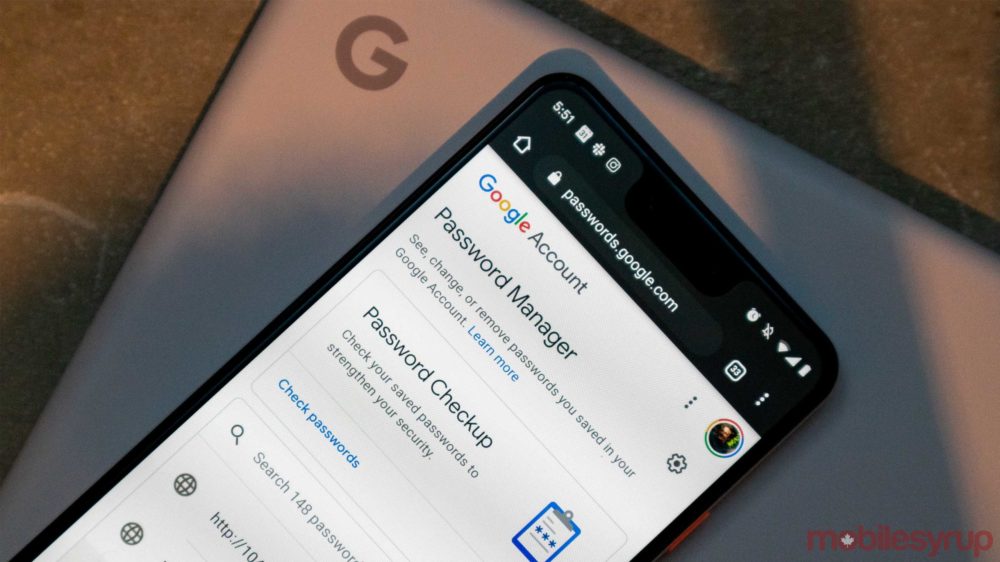Many types of malware can invade your computer and phone, but one of the most infamous is a keylogger. A keylogger, or keystroke logger, is software that records everything you type on your keyboard and anything you enter in forms, including passwords. This type of spyware might be hard to spot at first because it’s designed to work silently to avoid detection. How to tell if you have keylogger software installed on your computer or phone? Let’s go over the quickest and easiest ways below.
Table of Contents
Types of Keyloggers
There are two main types of keyloggers: hardware-based and software-based. Hardware-based keyloggers use physical components like microphones and cameras to record what you’re typing. Please note that these hackers don’t need physical access to your devices to install this malicious software. Software-based keyloggers install themselves into programs such as web browsers and email clients. They often install hidden files on your system, so they don’t appear when you search for them using anti-malware tools. Here we will discuss how to detect both kinds of malicious keyloggers.
Hardware Keyloggers
Hardware-based keylogger programs use a built-in microphone or camera, meaning they need to connect to your machine physically. Some examples include:
- USB devices
- Network cards
- Built-in webcam/microphone ports
Software Keyloggers
Software keyloggers usually come disguised as legitimate applications. Once installed, these apps hide their malicious software behind other processes, making it difficult to see where they came from. Examples of software keyloggers include:
- Adobe Flash Player plugins before its end of life
- JavaScript extensions
- Browser add-ons
- Email client plugins
- Web browser toolbars
How do Cyber Criminals Use Keyloggers?

Photo by Sora Shimazaki from Pexels
Cybercriminals use keyloggers in a variety of ways. For example, some criminals may use keyloggers to steal credit card information, while others may sell stolen data online. In addition, cybercrooks sometimes use keyloggers to monitor employees’ activities. The following sections explain more about each scenario.
Stealing Credit Card Information with Keyloggers
Keylogging technology has become increasingly popular among identity thieves who want to steal sensitive financial information. These crooks typically target people whose job requires them to handle large amounts of money. Employees using their company laptops to log onto banking websites could access personal account numbers, login credentials, PINs, and bank routing codes.
Selling Stolen Data Online
Keylogging technology isn’t just used by criminals looking to steal confidential information; it’s also commonly employed by those selling stolen data online. Hackers create fake sites that look exactly like real ones.
When users visit one of these bogus pages, malware is automatically downloaded onto their computers without warning. This attack can infect hundreds of thousands of unsuspecting victims daily!
Monitoring Employees Activities
Employees working in high-risk positions must undergo background checks before being hired. However, many employers fail to check whether potential hires disclose all relevant criminal activity during the hiring process. A simple way to catch dishonest workers is to set up a spy program on their computers. By monitoring what they’re doing at work, you’ll be able to find out if they’ve been stealing company secrets.
Detecting Malicious Keyloggers
There are several methods available to detect malicious keyloggers. You should always keep your antivirus suite updated because new threats appear daily. Also, regularly scan your hard drive with a reputable antimalware application. Finally, consider using anti-malware tools with keylogger checkers explicitly designed to detect hidden programs like SentinelOne, SpyHunter, or AdwCleaner.
If you suspect that someone might be spying on you through your PC, here are some tips to help protect yourself against this threat:
- Use strong passwords – Don’t reuse passwords across multiple accounts. Instead, choose unique passwords for different services.
- Install security software – Ensure you install updates from trusted sources, so you don’t inadvertently download viruses or other harmful applications.
- Keep your operating system current – It’s important to stay abreast of the latest patches and upgrades released by Microsoft, Apple, and Linux.
- Backup Your Files – Backing up files will ensure you won’t lose valuable documents or photos when disaster strikes.
- Don’t click links sent via email – Never open attachments unless you trust the sender. Even if the message appears legitimate, clicking on the link may result in downloading dangerous code that could compromise your privacy.
- Never share private details about yourself – Sharing too much information opens you up to identity theft. Be careful not to post anything on social media that reveals your address, phone number, date of birth, mother’s maiden name, etc.
You may not even realize you’ve got a keylogger running on your PC until after an incident occurs. Make sure the anti-virus software you use has a keylogger checker detection feature. The best thing to do is keep track of all the information you input online and ensure nothing suspicious happens with those accounts. For example, if you log onto Facebook or other social networks daily from home, check out who else logs into their account from your home. This could help determine whether anyone was watching your activity while logged in remotely.
Also, look through any emails sent to you recently; did something seem off? Did you receive a phishing email you accidentally clicked on? Or a message from someone claiming to be “your friend” asking about personal info like credit card details, bank details, social security number, or your bank account balance? These things should raise red flags. If you wonder why someone would want access to your sensitive data, you may need to look closely at your privacy settings.
Ten Ways to Tell if You Have a Keylogger
If you notice these signs, a keylogger may have been installed on your machine.
- An unexpected pop-up window appears unexpectedly, or you receive strange error messages when typing certain letters or numbers. For example, “Error: This file contains an unexpected end of input.” A keylogger is likely at work if you don’t remember downloading anything related to the issue.
- You’re seeing ads related to your most commonly used search terms and websites, even when you haven’t typed anything related into the search bar or visited those sites in months. For example, a keylogger may be at work if you often buy clothing online and see an ad for one of your favorite stores on another site.
- You’re having issues connecting to secure websites or logging into your account on one of them, especially financial institutions and social media platforms like Pinterest or Instagram. If you continue to have trouble accessing the site after trying different browsers and clearing caches, cookies, history lists, and browsing data, you may have a keylogger at work.
- Your antivirus software or monitoring tool detects viruses after your computer has been connected to the internet for an extended period, even though it was clean when you turned it off and checked with the AV program before using it again. This is because many types of malware are designed to be dormant until a certain period has passed, after which they wake up to start sending out data.
- Your computer is running unusually slowly. If it’s been noticeably slow for an extended period, but you haven’t installed anything new on your machine in the past few days, there may be a keylogger at work.
- Your password history has been changed without your knowledge is a quick way to detect a keylogger.
- Someone used your login credentials to gain unauthorized access to another site you haven’t used.
- The same person accessed multiple sites under different usernames and passwords.
- Unusual network traffic occurs, or suspicious websites appear in your browsing history.
- Keyboard shortcuts aren’t working correctly.
What Should You Do if You Find a Keylogger on Your Computer?

Photo from Geeky Mint
If any of these signs get your Spidey senses tingling, it’s time to investigate what could be happening with your machine.
- Run your antivirus software. You should always have anti-virus software installed on all devices that connect to the internet for security purposes. If you need help installing one or updating yours, consult a professional.
- If you’re not already doing so, you should use a password manager to help you create and remember complex passwords for all your accounts and generate secure ones that hackers can’t guess easily. This will make it much more difficult for them to access your information or devices if they attempt to do so through keylogging methods.
If you’re unsure how a keylogger could have gotten on your computer or what to do about it, you can consult an expert.
How Can You Stop and Remove a Keylogger?

Photo by Andrea Piacquadio from Pexels
- It would be best to always use two-factor authentication when available for all your accounts that support the feature. This will notify another device associated with your account if you log in from a new location. Thus giving you added protection.
- Use the proper anti-virus or anti-malware software with a keylogger scanner and keylogger checking capabilities to ensure you’re safe every time your machine is scanned.
- You’ll want to regularly back up all of the data on your computer to an external hard drive or cloud storage service. We talk about backups all the time. If anything happens to your device, this will help ensure that any sensitive information can’t be accessed by hackers attempting to use keylogging methods to steal personal details.
- You should implement a firewall to block unauthorized access attempts from other devices and locations, especially if you share your machine with others at home (like family members) or in the workplace. Suppose someone else is using your computer without permission. In that case, they could be attempting keylogging methods to steal sensitive information that can later be used for identity theft, and you don’t want that to happen.
- You want to always be cautious when opening links and attachments, especially if you’re unsure of their source or from someone you know and trust. Even seemingly harmless websites can host malware that will infect your computer as soon as it’s activated by a keystroke event like clicking on the link.
Can a Mobile Device Get a Keylogger?
Mobile devices are not immune from keyloggers either. They can often be infected via malicious apps downloaded from third-party app stores or even those provided directly by carriers. Keylogger attacks usually occur after users download something off the Internet and then click on a link within the text message or email that takes them to a website where there is a hidden keylogger waiting to record every single detail typed into forms or entered into fields.
It’s important to keep mobile operating systems updated and install only trusted applications from reputable sources. There are many different ways these infections can occur, but one thing is sure: if you aren’t careful, you can end up being victimized by a keylogger just as easily as you would on a desktop PC.
How to Tell if You Have a Keylogger on Your Phone
- Your phone or tablet’s battery life suddenly decreases dramatically for no apparent reason, even though you haven’t used your device any differently than usual and the battery is relatively new. Hackers can activate keylogging methods when you’re not using your device to help them gather information about what types of websites and apps you frequently visit, which could be used for identity theft purposes in the future.
- Your phone or tablet’s performance suddenly decreases dramatically after being connected to the internet for a while (even though you’re not doing anything intensive like streaming videos or playing games). This is because hackers can use keyloggers to access your device’s data, even when it isn’t active.
- Your phone suddenly stops receiving notifications for text messages and calls from certain numbers (even after checking with friends and family members about whether they sent you a message in the last few minutes). Hackers can use keyloggers to access your text messages and call history, which could compromise the sensitive financial details of friends or family members discussing it with you via this method.
- Your phone’s battery suddenly stops holding as much of a charge (even though there isn’t anything wrong with it, and you haven’t dropped it or exposed it to high temperatures). If a keylogger is installed on your device, hackers can use this method to gather information about what passwords and PINs you frequently enter with the keyboard. This could be used later for identity theft if they can access any financial apps you have downloaded onto your device.
- Your mobile device suddenly stops receiving push notifications for emails and social media messages (even though you’ve been using it normally). This is because keylogger attacks can be used to access this information so that hackers can better understand what types of websites and apps are frequently visited on your phone or tablet. They will then look through the apps’ permissions to see if they can find any sensitive information you’ve allowed access to but shouldn’t have.
- Your phone or tablet starts running more slowly (even though it was working fine before). Hackers sometimes install keyloggers alongside other types of malware on your mobile device to gain access to all the data stored there, which could be used for identity theft purposes in the future.
- Your phone or tablet starts crashing more frequently (even though it was working fine before). Hackers can activate keyloggers when you’re not using your device to gather information about what types of websites and apps are visited daily, which they will then use to build up a profile of your behavior. This can be used for identity theft in the future if they can access any financial apps you have installed on your device or gain access to passwords and other sensitive information stored there.
What Should You Do if You Find a Keylogger on Your Phone?

The photo was taken from Mobile Syrup.
If you find a keylogger on your phone, the first thing to do is stop using it and remove all personal data. Remove any SIM cards or SD cards related to the device as well. It would help if you also changed passwords for anything sensitive like credit card information, email accounts, bank accounts, etc. Then contact your IT professional to let them know what is happening, and they will take it from there. You may also want to contact law enforcement if the keylogger attack is severe enough or if your IT team can’t fix it.
Wrapping Up
Having a suspicious program like a keylogger installed on your computer or mobile phone could do some real damage, so you want to quash it as quickly as possible. The best way to ensure that you don’t get infected by keylogger programs is to keep an eye out for signs of infection and always make sure that you update software regularly. Also, never download files from untrusted sources or open attachments sent via unknown methods.
Lastly, installing applications from third-party app stores can lead to problems, especially if those legitimate programs aren’t legitimate. Always check reviews and ratings before downloading something new. You can never be too safe regarding your data, especially your financial information.
If you have any questions or concerns regarding keyloggers, please send us a message or call us at 480-493-5999.





I recently had my broken screen replaced on my Android. That day I noticed it acting odd. Battery heating up and draining quickly and my wallpaper settings for my screen would pop up at weird times. Then today when I picked up my phone it was acting as if it was closing and opening apps and it was really acting screwy. So tonight I did some research and found out that a lot of screen repair places install screens with keyloggers. I immed checked my VPN and it was disabled! So THEN I saw that my VPN subscription showed that I had 4 devices on my plan. (I only have ever had 3 devices on my subscription plan) It showed a device ID unknown to me that started with TB. So I deleted it and re-enabled my VPN, rebooted my phn and then also installed But defender. Everything seems ok. But can keyloggers also access other devices on my network?
Oh my gosh! That would be a HUGE breach of trust and I hope you at least left them a negative review warning others what kind of shady business practices they are conducting. To answer your question, yes, once the keylogger has access to one of your devices it will have access to any other connected device. So, if your computer, tablet, and smartphone are all connected then the keylogger would have access to them all.
*Bitdefender* not but defender. LoL @ spell check
Hahahahaha